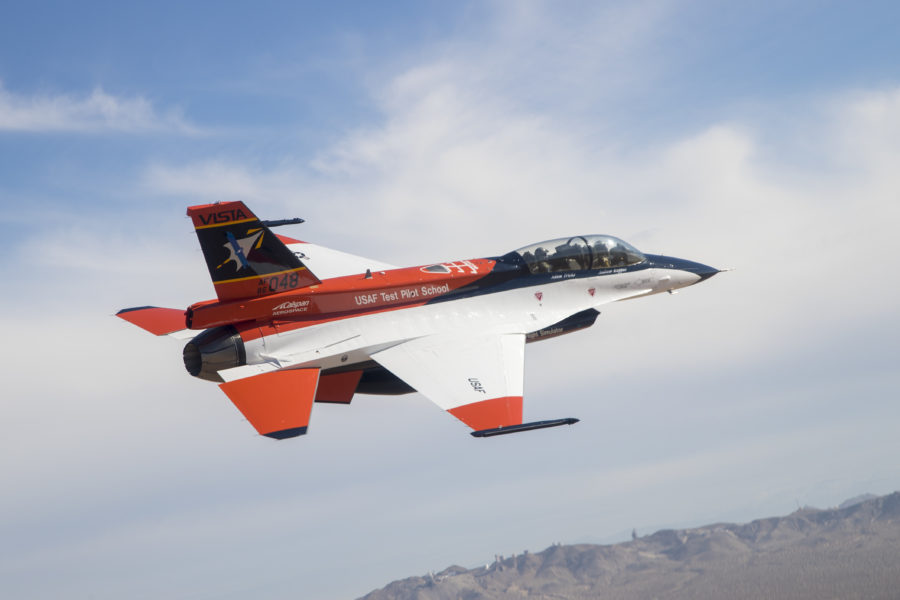There’s a new X-plane in the Air Force’s fleet.
The Air Force Test Pilot School in June redesignated the NF-16D Variable In-flight Simulator Aircraft as the X-62A, allowing the aircraft to be used for testing the Air Force Research Laboratory’s Skyborg program.
The aircraft, originally a Block 30 F-16, has been heavily modified and upgraded since its first flight in 1992 to give pilots a way to simulate different flying conditions as well as the characteristics of other aircraft, according to a USAF release.
“For more than two decades VISTA has been a vital asset for the USAF TPS [Test Pilot School] and the embodiment of our goal to be part of the cutting edge of flight test and aerospace technology,” said William Gray, VISTA and TPS chief test pilot, in the release. “It has given almost a thousand students and staff members the opportunity to practice testing aircraft with dangerously poor flying qualities, and to execute risk-reduction flight test programs for advanced technologies.”
The Air Force is now replacing the aircraft’s VISTA Simulation System with the System for Autonomous Control of Simulation, the release states.
“The redesignation reflects the research done on the aircraft over the past almost 30 years, as well as acknowledges the major upgrade program that is ongoing to support future USAF autonomy testing,” said Chris Cotting, USAF TPS director of research, in the release.
AFRL’s Skyborg is a suite of hardware and software aimed at developing the Air Force’s use of teaming manned and unmanned aircraft, also known as a “loyal wingman.” The system made its first flight on a Kratos UTAP-22 Mako air vehicle in April. In December 2020, the Air Force awarded Kratos, Boeing, and General Atomics contracts to continue with the effort.
Skyborg is one of four Air Force “Vanguard” programs—top research projects that USAF believes will be unique and useful. Others include the Golden Horde weapons swarm, Navigation Technology Satellite-3, and the “rocket cargo” space mobility effort.
The famed “X” designation is for aircraft that are designed for “testing configurations of a radical nature,” Edwards said in the release. The X-62 is now part of an exclusive club that has helped shape cutting-edge aeronautical research for decades, including the Bell X-1, which was the first airplane to break the sound barrier, and the hypersonic X-15. Other more recent examples include the X-37 space plane, the hypersonic X-51 Waverider, and the second-most-recent X-61 Gremlins.

